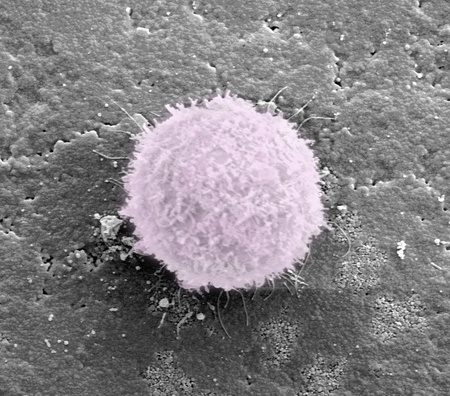Pioneering research to develop man-made bone to help patients with diseased and damaged bone is a step closer to the market.
The University of Aberdeen has struck a multiple licensing deal with ApaTech Ltd - a world leading orthobiologics company focused on the development of synthetic bone graft technologies.
The three licence agreements mean the company can exploit three different technologies developed at the University from research led by Dr Iain Gibson and Dr Jan Skakle, from the Department of Chemistry and the School of Medical Sciences.
Dr Gibson has spent 13 years developing synthetic materials that mimic bone and could be used to repair and regenerate bone in patients requiring spinal surgery. These could also be used to help people with osteoporosis, bone injuries from accidents or sports, or act as a “filler” to patch diseased and damaged bone.
The material has yet to be used in patients. But it is hoped that taking this technology from its current early design stage, to a product that surgeons can use, will take two to four years of development by ApaTech.
The three new technologies that ApaTech will advance were worked on by two University of Aberdeen PhD students whose studentships were funded by the company. These innovations will:
- Allow ApaTech to expand and build on the science to incorporate biologically active silicon into orthopaedic bone graft materials to deliver better bone repair.
- Enable improved MRI imaging of synthetic bone graft materials. This would lead to better monitoring of the healing process.
- Further develop scientific understanding of how bone graft materials can enhance bone regeneration.
Professor Dominic Houlihan, Vice Principal for Research and Commercialisation at the University of Aberdeen, said: “The University of Aberdeen is delighted to have signed three licensing deals with ApaTech which will allow the company to take these innovative technologies closer to the market.
“ApaTech is leading the way with the development of synthetic bone for a global market that is enormous. For example, orthopaedic spinal operations are the second fastest growing orthopaedic surgical area. In America alone $3bn is spent each year on spinal repair devices, and these technologies have the potential to capture a significant part of this market.
“Commercialisation of this research is not only beneficial for patients who will receive enhanced treatments, but is important for the UK economy in terms of increasing the international competitiveness of UK companies. The licensing of this technology is a further example of the commercialisation culture within the University of Aberdeen, where we transfer academic research to commercial outcomes.”
Dr Gibson, Engineering and Physical Sciences Research Council Advanced Research Fellow and a Reader at the University of Aberdeen, said: “There is a real need for materials of this kind that can provide orthopaedic surgeons with a synthetic alternative to using bone grafts and can speed up the healing process for patients.
“Licensing our technologies to ApaTech could possibly mean that this kind of synthetic bone could be used to treat patients as early as 2012, which is a very short development time from laboratory concept to a product that can be used clinically.
“The University of Aberdeen’s relationship with ApaTech has also been hugely beneficial for our postgraduate students. The work being licensed to ApaTech was the basis of the research for two postgraduate students in our department.
“In addition to benefiting financially from this work through being co-inventors of this technology, the students obtain unique experience in commercialising scientific research. One of them has since gone on to work for ApaTech, and will be involved in the commercial development of this technology with the company.”
Tom Buckland, Vice President Research and Development at ApaTech, said: “I am delighted that the strong association between The University of Aberdeen and ApaTech continues to provide access not only to exciting new technologies and product opportunities but also enables us to support important research into the fundamental relationship between new materials and bone biology.”


